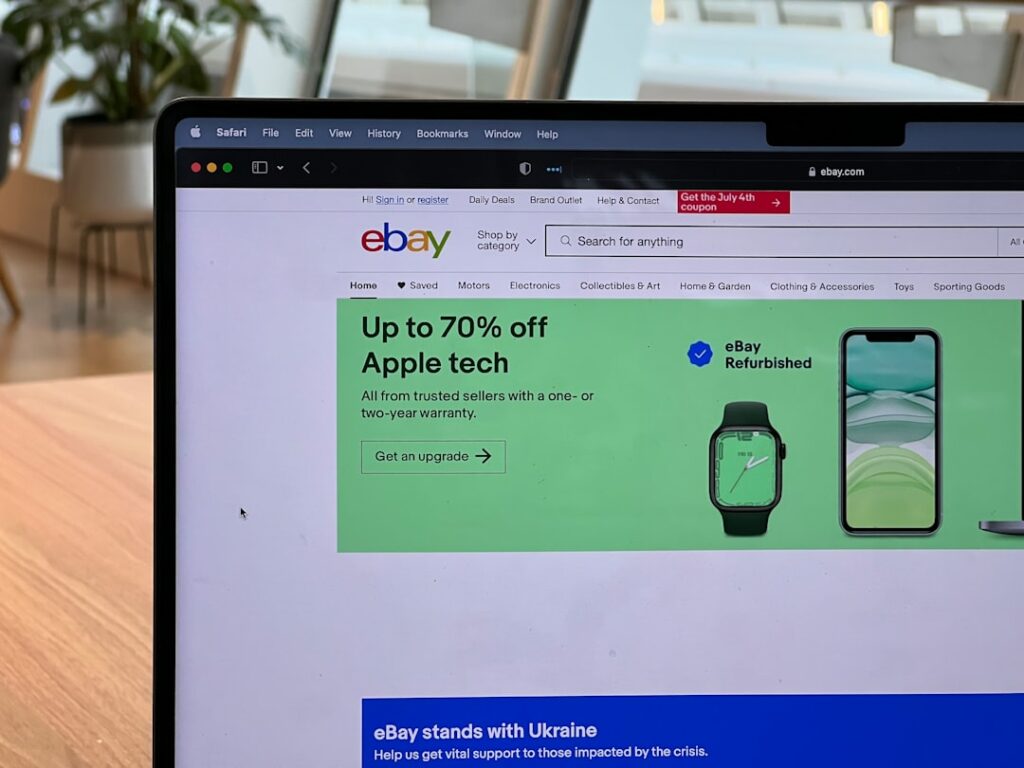Sell More: Listing Multiple Items on eBay (2024 Guide)
Step 1: Prepare Your Items for Listing
Gather All Necessary Information and Photos
Before you even open eBay, organize all the details for each item. For clothing, note brand, size, material, color, and any unique features or flaws. For electronics, record model number, serial number, included accessories, and functionality. Take high-quality photos in good lighting for each item. Aim for at least 3-5 photos per item: a main shot, close-ups of details, any tags/labels, and clear images of any imperfections. Use a plain, neutral background to make your items stand out. Ensure photos are well-lit, in focus, and accurately represent the item’s condition.
Clean and Inspect Each Item Thoroughly
Dust, dirt, and smudges can significantly detract from an item’s perceived value. Before photographing and listing, meticulously clean each item. For electronics, use a microfiber cloth and appropriate cleaners; for clothing, ensure it’s freshly laundered or dry-cleaned and ironed if necessary. Inspect each item for any defects, wear, or damage. Document these clearly with both descriptions and photographs. Transparency builds buyer trust and prevents post-sale disputes. For example, if a vintage toy has a chipped corner, photograph it and mention “small chip on the top left corner” in your description.
Step 2: Create Your eBay Listings Efficiently
Utilize eBay’s Bulk Listing Tools
For multiple items, avoid creating listings one by one. eBay offers powerful bulk listing tools designed for efficiency. If you’re listing similar items (e.g., multiple t-shirts of different sizes but the same design), use the “Sell similar” option from a completed listing or create one listing and then use the “Revise and relist” option to duplicate it. For larger inventories, consider using eBay’s Seller Hub listing tool (accessible via Seller Hub > Listings > Create listing) or third-party listing software that integrates with eBay. These tools allow you to upload multiple items via a spreadsheet (CSV file), applying common categories, shipping policies, and payment methods across many listings simultaneously, saving significant time.
Optimize Each Listing with Keywords and Clear Descriptions
Each listing needs a compelling title and detailed description to attract buyers. For the title, use relevant keywords that buyers are likely to search for, including brand, model, color, size, and condition (e.g., “New,” “Used”). Maximize the 80-character limit. In the description, provide all the information gathered in Step 1. Start with a concise summary, then elaborate on features, dimensions, condition (mentioning any flaws), and what’s included. Use bullet points for readability. For example, instead of just “blue shirt,” use “Men’s Nike Dri-FIT Athletic T-Shirt – Royal Blue – Size Large – Excellent Condition.” For the description, add details like “Breathable fabric, perfect for gym or casual wear. No rips, stains, or tears. Smoke-free home.”
Step 3: Manage and Monitor Your Listings
Track Sales and Inventory Regularly
Once your items are listed, proactive management is key. Regularly check your eBay Seller Hub dashboard for new sales, pending payments, and expiring listings. Keep a separate inventory log (spreadsheet or dedicated software) that mirrors your eBay listings, noting item ID, title, quantity, current status (listed, sold, shipped), and location in your storage area. This prevents overselling and helps you quickly locate items for shipping. For example, update your spreadsheet immediately after an item sells, marking it as “Sold” and noting the buyer’s name.
Respond Promptly to Buyer Inquiries
Potential buyers often have questions before making a purchase. Set up notifications (email or mobile) for new messages. Aim to respond to all inquiries within 24 hours, ideally sooner. Provide clear, concise, and helpful answers. If a buyer asks for more photos, try to accommodate if feasible. Timely and professional communication can convert inquiries into sales and improve your seller ratings. For example, if a buyer asks for the exact dimensions of a jacket, measure it accurately and reply with “The jacket measures 28 inches from shoulder to hem and 22 inches across the chest.”
Step 4: Streamline Your Post-Sale Process
Package Items Securely and Professionally
First impressions matter, even after the sale. Use appropriate packaging materials: sturdy boxes for fragile items, poly mailers for soft goods, and plenty of void fill (bubble wrap, packing peanuts, crumpled paper) to prevent movement during transit. Wrap individual items to protect them from scratches or moisture. For example, if shipping a ceramic mug, wrap it in several layers of bubble wrap, place it in a sturdy box, and fill all empty space with packing peanuts to prevent shifting.
Print Shipping Labels and Arrange for Timely Shipment
eBay offers integrated shipping label printing directly from Seller Hub, often at discounted rates compared to retail counter prices. Verify the buyer’s shipping address. Print your labels, attach them securely to your packages, and schedule a pickup or drop off at your chosen carrier (USPS, UPS, FedEx) within your stated handling time (e.g., 1-2 business days). Always obtain tracking information and upload it to eBay promptly. This protects you in case of disputes and allows the buyer to track their purchase, enhancing their overall experience.
FAQs
Q: Can I list different types of items (e.g., clothing and electronics) in a single bulk upload?
A: While some bulk tools allow diverse items, it’s often more efficient to group similar items by category for bulk uploads. This ensures consistent category assignment, item specifics, and shipping policies. You can then use separate bulk uploads for different item types.
Q: What’s the best way to handle shipping costs when listing multiple items?
A: For multiple items, consider offering combined shipping discounts. You can set up shipping rules in eBay’s Seller Hub (Shipping settings) that automatically calculate reduced shipping for buyers who purchase multiple items from you. Alternatively, use flat-rate shipping for individual items or calculated shipping based on package weight and dimensions.
Q: How do I manage inventory if I also sell these items on other platforms?
A: If you cross-list, a centralized inventory management system is crucial. This could be a simple spreadsheet you update manually, or dedicated multi-channel inventory software that automatically adjusts stock levels across all platforms when an item sells on one. This prevents overselling and keeps your listings accurate.
Q: What if I have a large quantity of the same item? Should I list them individually or as one multi-quantity listing?
A: If you have many identical items, create a single “multi-quantity” listing. Specify the total quantity available in the listing form. This saves on listing fees (you only pay for one listing) and simplifies management. Buyers can then purchase multiple units from that single listing.




